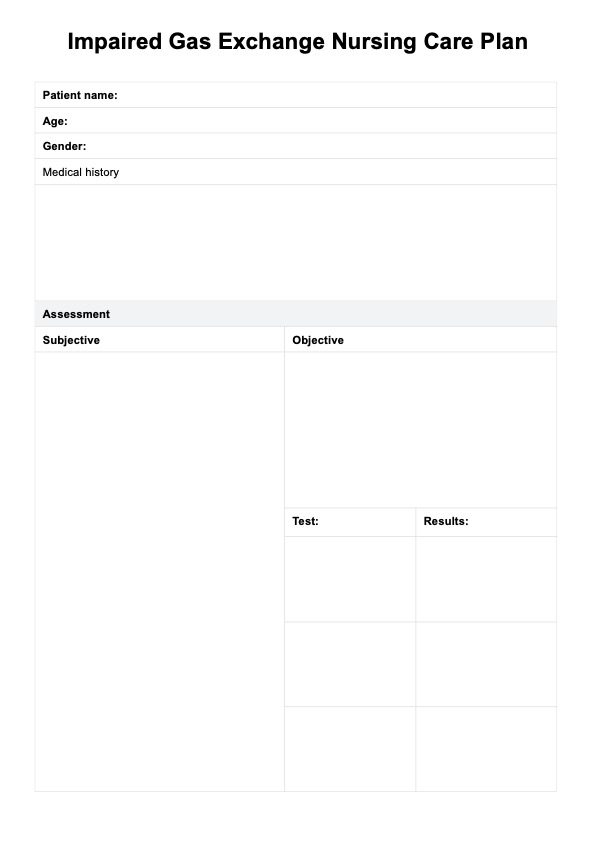For patients experiencing impaired gaseous exchange, the nursing care plan focuses on optimizing oxygenation and ensuring adequate ventilation. Key interventions include monitoring oxygen saturation levels, administering oxygen therapy as needed, promoting effective breathing patterns through deep breathing exercises, and positioning the patient to enhance lung expansion.

Impaired Gas Exchange Nursing Care Plan
Streamline patient care with our user-friendly Impaired Gas Exchange Nursing Care Plan Template. Tailor interventions for optimal respiratory management.
Impaired Gas Exchange Nursing Care Plan Template
Commonly asked questions
In cases of respiratory distress, the nursing care plan emphasizes immediate assessment and intervention to stabilize the patient's condition. This includes administering supplemental oxygen, performing a thorough respiratory assessment, and positioning the patient in a high Fowler's position to facilitate easier breathing.
For the diagnosis of ineffective gas exchange, nursing interventions should aim to improve oxygenation and ventilation. This can involve administering prescribed medications, such as bronchodilators or corticosteroids, providing respiratory treatments, and ensuring proper positioning to enhance lung function.
EHR and practice management software
Get started for free
*No credit card required
Free
$0/usd
Unlimited clients
Telehealth
1GB of storage
Client portal text
Automated billing and online payments











